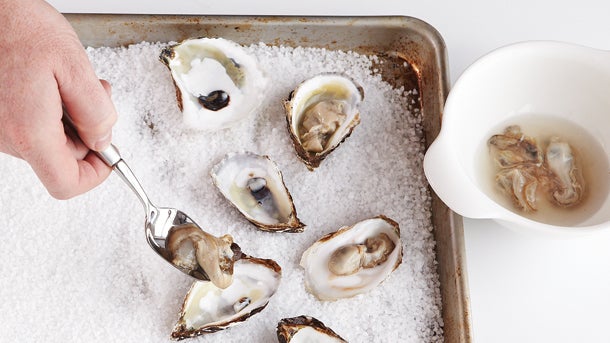Heading out the door? Read this article on the new Outside+ app available now on iOS devices for members! Download the app.
They’re a common sighting in seaside restaurants. Most, if not all, seafood restos offer an elegant platter of these meaty mollusks. You might’ve even taken part in a buck-a-shuck, a common offering serving an oyster for a dollar. But did you know that not only is this innocuous shellfish as nutritious as seafood comes, but they’re also immensely good for the environment?
By now, it’s nearly common knowledge that mass farming and consumption of animals are contributing to carbon emissions at an alarming rate. When asked what we can do to most dramatically reduce our carbon footprint, environmentalists often say: Reduce animal product consumption.
However, oysters appear to be a major exception.
In fact, oysters are so sustainable that they are often the only animal product some vegans will make an exception for. These environmentally-conscious eaters call themselves ostrovegans or bivalvegans. While they abstain from most or all other animal products and byproducts, they make an exception for bivalves. Bivalves, as their name indicates, are a class of mollusks with a shell made of two parts: Oysters, mussels, scallops and clams.
Why are oysters so good for the environment?
Unlike other farmed animals, farming oysters — if done expertly — does not have a negative environmental impact. Impressively, they actually do the opposite: Farming oysters can have a net positive effect.
This is because oysters are Mother’s Nature’s water purifiers. One oyster can filter up to 50 gallons of water per day. These mighty little shellfish clean the bodies of water they live in, sequestering nitrogen and carbon dioxide from the atmosphere and incorporating these pollutants into their shells and tissues as they grow. While nitrogen is an essential nutrient for aquatic life, there can always be too much of a good thing. Excessive nitrogen boosts algae growth which can overwhelm an aquatic environment and reduce the oxygen level. With oysters filtering nitrogen and inhibiting excessive algae growth, you’ll notice waters populated by oysters tend to be visibly clearer.
Oysters are also essential to the infrastructure of aquatic ecosystems. These shellfish cluster onto any hard surface submerged in water, like rock faces, piers, old shells and shipwrecks. Here, they fuse together forming what is known as an oyster reef. This wall, an aggregation of living and dead oysters, serves as a habitat for other aquatic life, like fish and marine plants.
Are oysters good for the human body?
We’ve established that these curious crustaceans are beneficial for our planet. But are they also beneficial for our own health?
The answer is a confident “yes.” In fact, if you are zinc deficient — which you very likely could be — oysters are recommended as one of the all-time richest sources of this essential mineral. A 3.5oz serving of oyster meat can provide over 100% of the Recommended Daily Intake (RDI) for zinc, as well as for vitamin B12 and copper.
Plus, oysters are incredibly brain-healthy. These shellfish contain over 75% of the RDI for selenium. While this powerful mineral is best known for its critical role in metabolism and thyroid function, selenium is also linked to slowing age-related cognitive decline. Oysters also contain over 75% of the RDI for vitamin D, an essential nutrient most North Americans are very deficient in. Vitamin D is largely credited for facilitating optimal immune function, but it has a potent effect on brain health, too. Deficiency has been linked to increased risk of development of dementia, depression and brain infections.
How do I eat oysters?
It’s one thing to have pre-shucked oysters arranged artfully on a platter, served with sauces and a squirt of lemon. But buying your own raw oysters and figuring out how to shuck and eat them is another beast entirely. Thankfully, we’ve summed it up in this visual guide to shucking and baking oysters:
How to Buy, Shuck & Bake Oysters
Oysters are a splurge most often enjoyed at fine-dining restaurants. But with some seafood shopping savvy and a few tools, it’s quite possible to indulge at home.
